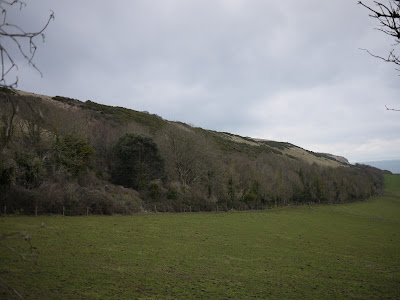The Horton Tower
We did this walk on our way home from a few days in Poole. It was broadly on the way and enabled us to begin to get to know the inland parts of Dorset - we have been focusing on the coastal parts.
The walk starts at Drusilla's Inn, where we had lunch. It's an unusual name for a pub - is it named for the sister of the Roman Emperor Caligula, the character in Buffy the Vampire Slayer or someone else? And the answer is - as all Hardy fans will immediately realise - the aunt of Jude and Sue in Jude the Obscure.
The route goes a short way along the road then across fields, where you get your first view of the extraordinary Horton Tower, and then through woodland.
Leaving the woodland, you follow a track which leads up to the tower. Up close you can see that it is six storeys high and has a hexagonal core surrounded by four round corner towers, with flat-faced towers between them.
Pevsner calls it "a megalomaniacal folly". It was built by Humphrey Sturt of Horton in 1750. It seems to have been a true folly, in that no-one seems to have any idea why Sturt built it.
The route now leads across fields to the village. On the left is the vicarage. Pevsner explains that it is all that remains of a mansion built on the site of Horton Priory and rebuilt in 1718.
We then made a slight detour to see the church of St Wolfreda which dates from 1701 according to a chronology inside. It was built on the site of a much earlier church. Pevsner describes the tower as "a memorable piece".
We then returned to the route which looped back behind the pub.
From: Pub walks in Dorset by Mike Power (Power Publications).
Map: Explorer 118 (Shaftesbury and Cranbourne Chase).
Distance: 3 miles.
Conditions: cold, biting wind.
Rating: three and a half stars - some very interesting buildings.


































